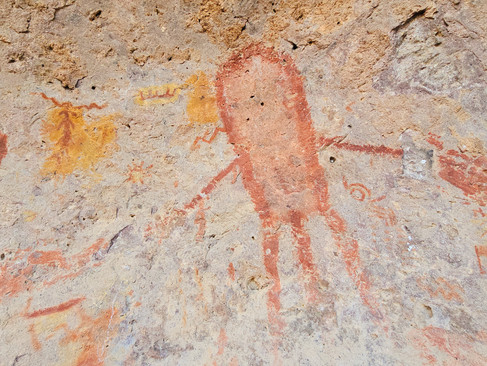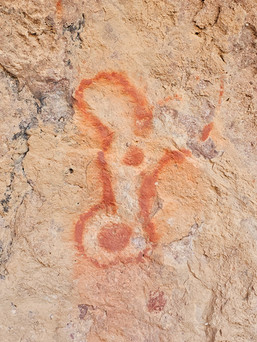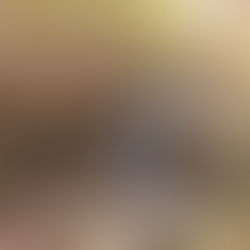From Trail to Tale: Exploring Lion's Mouth Cave Pictographs
- Dan Wagner
- Sep 30
- 2 min read
Updated: Oct 4
Tucked away in the hills outside Cedar City, Utah, Lion's Mouth Cave isn’t marked by signs or crowds, yet inside its opening you’ll find one of the region’s most impressive collections of rock art. Dozens of pictographs—painted in bold shades of red and yellow—span the walls, with figures ranging from animals and abstract shapes to haunting anthropomorphic forms. The atmosphere is quiet and contemplative, a place where natural beauty and ancient expression converge.


Trailhead elevation 6,586'
Water none
Don't miss climbing to the top of the cave
Exploring Lion's Mouth Cave Pictographs
It’s late September, and Dad and I have just wrapped up several days in Great Basin National Park. Now we’re on our way to explore the bizarre landscapes of White Pocket. About a third of the way into the six-hour drive, we pass the Parowan Gap site, and half an hour later we pull into Cedar City to stretch our legs and finally check out Lion’s Mouth Cave—a site with pictographs that has intrigued me for years. We park at an unmarked lot along Pinto Road (37.597083, -113.375840), finding only one other vehicle there.

There’s no sign for the trailhead, but a break in the cattle fence and an established path leading west make the way obvious.

The trail climbs steadily at first before leveling out into a low forest of pinyon pine. Within a few hundred feet, we spot the south end of the cave peeking above the trees.

A couple hundred yards later, we reach the west-facing opening. A short scramble brings us inside, where the walls unfold into a gallery of ancient art.

The pictograph panel is staggering—dozens upon dozens of figures, likely close to a hundred. Most are painted in red ochre, with others in yellow and white. With no written record, their meanings are left to interpretation, but the panel is rich with shamanic figures and other anthropomorphic shapes, each one hinting at a story we can only imagine.


As we begin studying the right side of the cave, a pattern starts to stand out—at least four figures resemble a bunny-like creature, oddly reminiscent of a modern cartoon character.

On the right side, the panel also includes what appear to be bear tracks, a bold yellow sawtooth design, snakes, anthropomorphic figures, and more.

Many of the figures on the panel seem to be of Fremont origin, including a prominent yellow outline of an anthropomorphic figure near the center of the cave. If true, it would mean that the artwork in Lion's Mouth Cave was created sometime between 700 to 1300 AD.

Dad and I stick around the cave for about 45 minutes, studying the artwork, before I send the drone up to capture a bird's-eye of the site.

There’s a route up to the top of the cave that offers sweeping views of the surrounding landscape, but with time short and our sights set on reaching White Pocket before sunset, we make our way back to the trailhead. It’s a small detour I’d been looking forward to for years—and it proves to be worth the wait a hundred times over.
_edited.png)







































